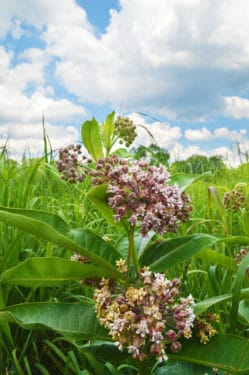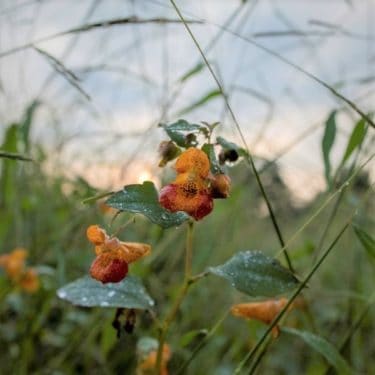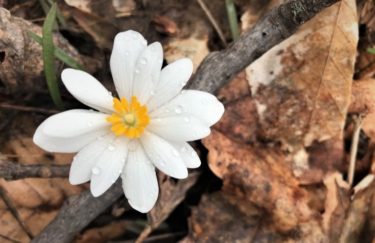Renaming Native Wildflowers
Media, PA., April, 2021 – Natural Lands announced today it will partner with the North American Botanical Project to rename and rebrand the common names of the native wildflowers of Zone 7 in the Eastern United States. After a competitive application process, Natural Lands was selected to consult on rebranding these native plants for the modern era.
Many native wildflowers have common names that are out of date with current scientific and cultural thinking, with incredibly beneficial plants bearing the moniker “weed,” which can be confusing to gardeners. One example is butterflyweed (Asclepias tuberosa) whose bright orange flowers are a favorite of butterflies, moths, and other essential insects. Part of the milkweed family, butterflyweed is a larval host plant for monarch butterflies.

Milkweed
This “rebranding” comes at a crucial time, as many novice gardeners are discovering the joys of transforming their yards due to COVID restrictions on other activities. Renaming these plants to remove the negative term “weed” will more accurately reflect their essential role in the ecosystem, and perhaps encourage both professional and home gardeners to use native species and increase biodiversity.
“A new generation of gardeners is growing this season, and we don’t want them to read the word ‘weed’ on a plant label and turn their noses up at those species,” said Theo Phrastus, director of the North American Botanical Project. “Natural Lands’ experiences working with the public, combined with their decades-long support of native plants, made them a, well, natural choice for this project.”
“Natural Lands is honored to partake in this important campaign,” shared Oliver Bass, president of Natural Lands. “Look, I’ll be the first to admit that names like ‘sneezeweed’ and ‘spiderwort’ make me chuckle, but they don’t do much for these plants’ public image.”
As a part of the application process, organizations were required to submit a list of 10 new species names, which were reviewed by a panel of both botanists and laypeople for accuracy and public appeal. Starting today, these native plants will henceforth be known by the following common names. (The species’ botanic names will remain unchanged.)
- Butterflyweed (Asclepias tuberosa) will now be called Butterfly Bliss to help consumers make the connection between this species and its role as a pollinator plant.

Jewelweed
- Jewelweed (Impatiens capensis) will now be known as Sunjewel, a name that keeps a connection to the original, while replacing the word “weed” with more descriptive word that indicates the bright yellow and orange color in the flowers.
- Common Milkweed (Asclepias syriaca) is now called Monarch Munchies as a nod to the vital role of this species in the life cycle of monarch butterflies.
- New York Ironweed (Vernonia noveboracensis) will be called Purple Iron Ladies. This name emphasizes the plant’s bloom color as well as its popularity with pollinators.
- Common Wood Sedge (Carex blanda) will now be known as Extra Special Wood Sedge. Who wants to be common? No one. But extra? And special? Those are words that sell.
- Virginia Spiderwort (Tradescantia virginiana) is now Starfish Flower. The word “wort” is way too similar to “wart,” which no one wants in their garden. The new name retains the reference to the plant’s growth habit.
- Purple-headed Sneezeweed (Helenium flexuosum) will become Happy Hypoallergenic Flower. Did someone say “ahh-choo!”? Look, dog breeders figured out long ago that “hypoallergenic” moves product, and honestly, who knows if those dogs are actually hypoallergenic or not? It’s just a marketing thing. It’s not like somebody from the FDA is gonna come on down and sniff your dog and then take you to jail. (We’re pretty sure that doesn’t happen.) We figured we could just add hypoallergenic into a flower name and people would run out and buy these little blooms and plant them everywhere. Every gardener with the sniffles will be buying HHF and if it actually makes someone sneeze we’ll just stay that it must have been something else because this flower is hypoallergenic. The “happy” part is just for, like, I dunno. It felt like it needed something.
- Foxglove Beardtongue (Penstemon digitalis) will now be known as Smooches on a Stick. Quite frankly, a beard on the tongue sounds terrible. No one wants to discover a full beard growing on their tongue. If that happens to you, you should see a doctor.
- White Baneberry (Actaea pachypoda), also known as Doll’s-eyes because of their creepy-looking fruit, will now be known as Neighbors Revenge, to be planted when you have a neighbor you’d like to keep an eye on. Pop these little babies in the ground right next to your property line to let the neighbors know exactly how you feel about them. With a plant.
- Bloodroot (Sanguinaria canadensis) has an amazing name and we refuse to change it. It’s totally metal.

Bloodroot, which is amazing and perfect.
Said Oliver Bass, “We’re excited to see the reaction to these newly branded native plants. If all goes well, we hope to lobby the American Ornithological Society to change some bird names too. We’d start with the Tufted Titmouse.”
And if you buy all that, we’ve got a bridge we’d love to sell you. Happy April!
